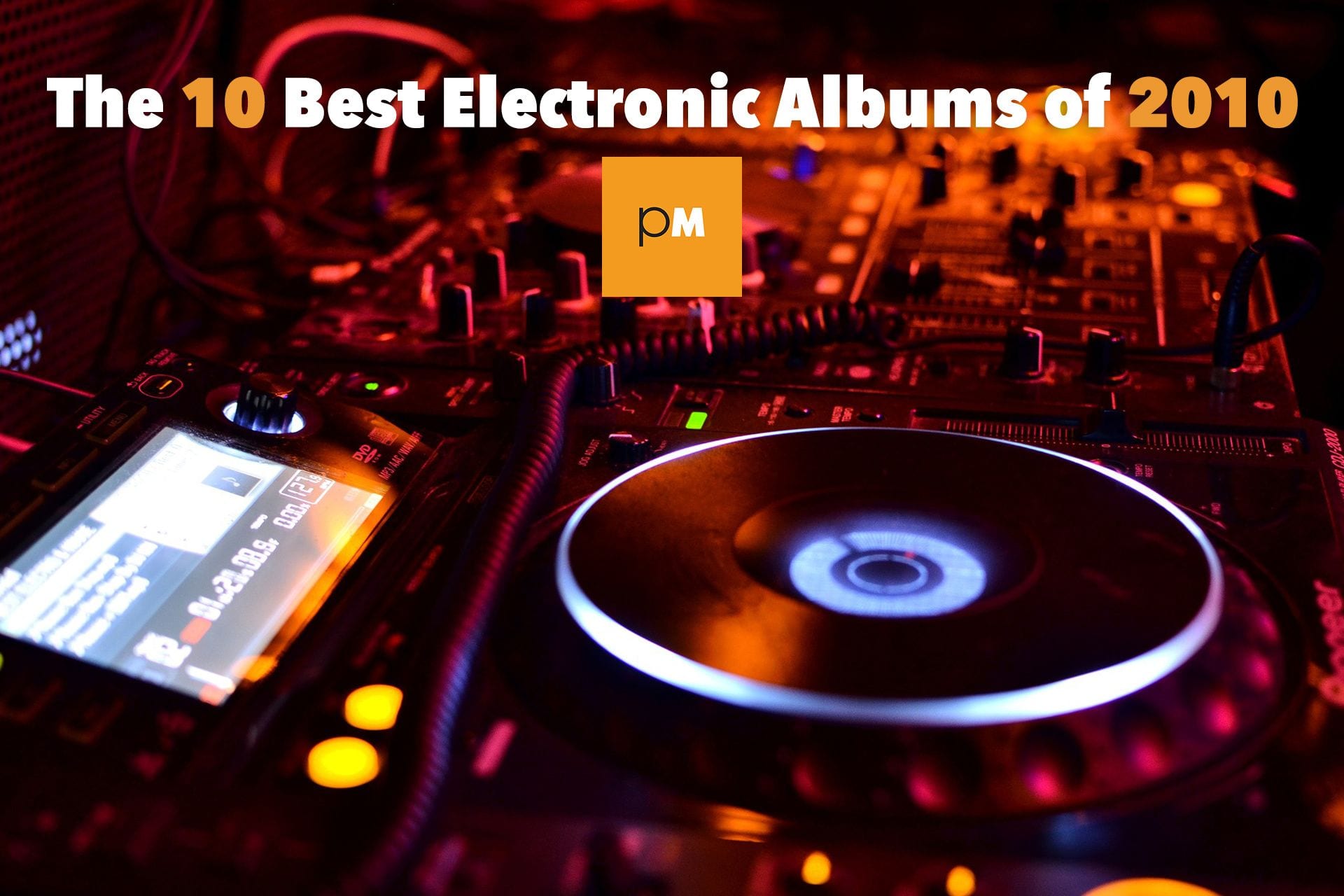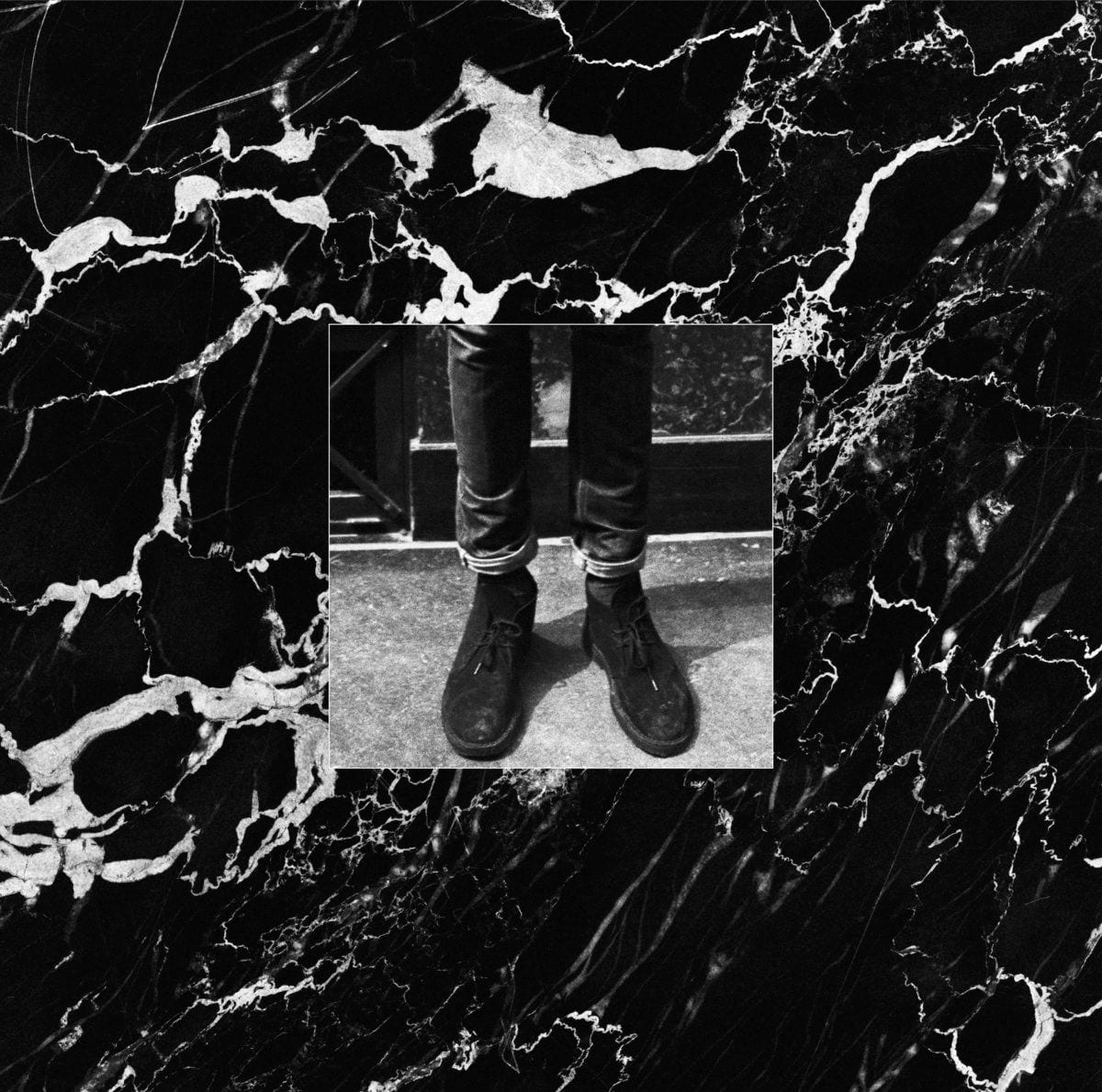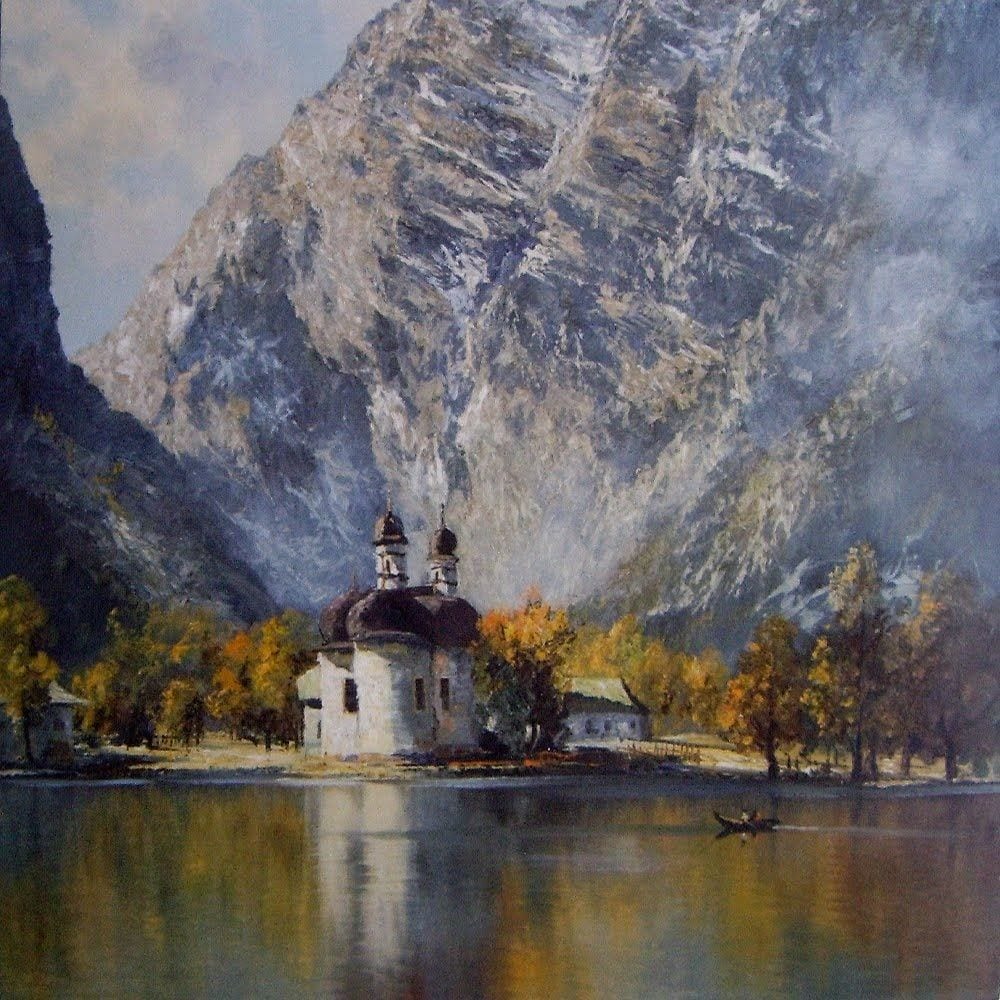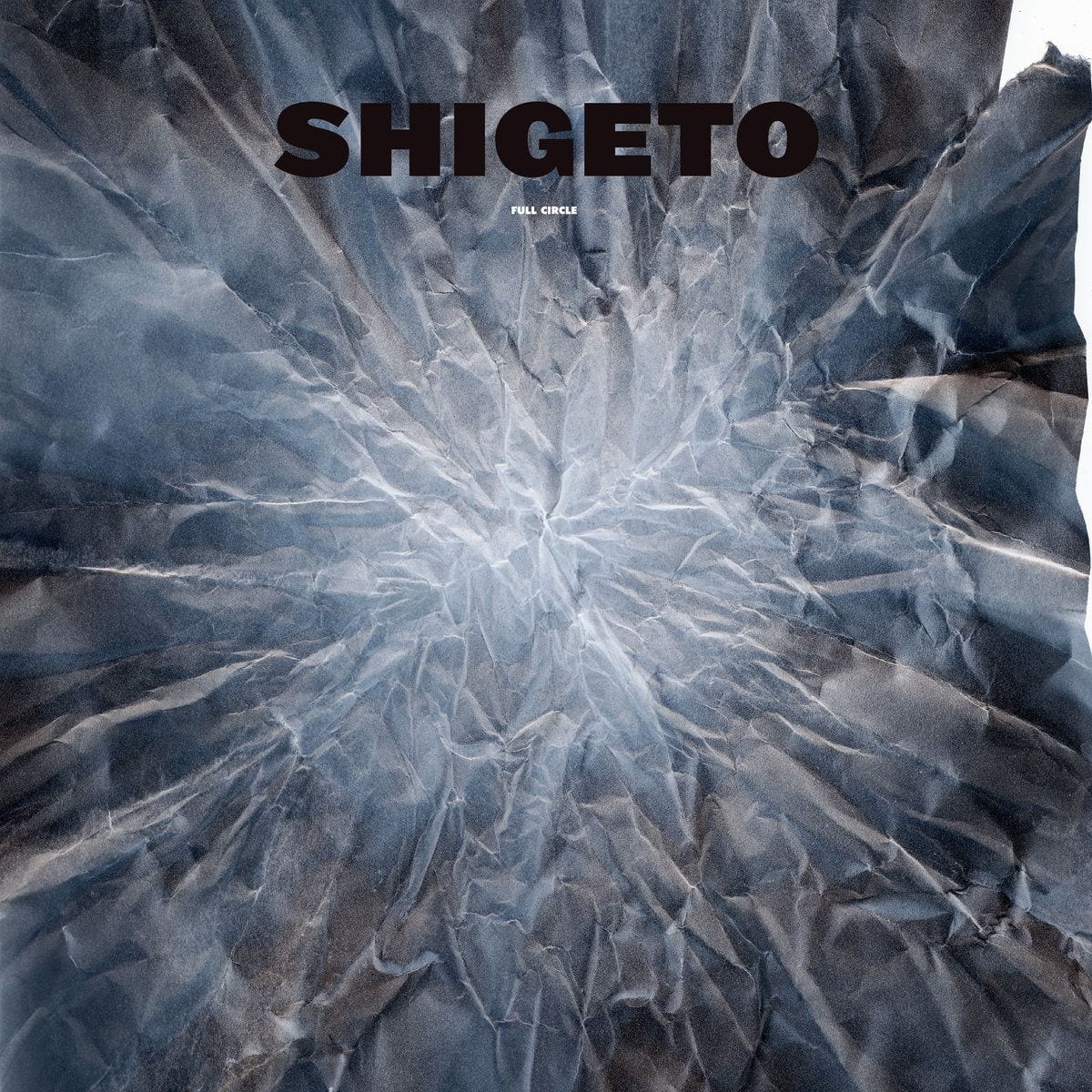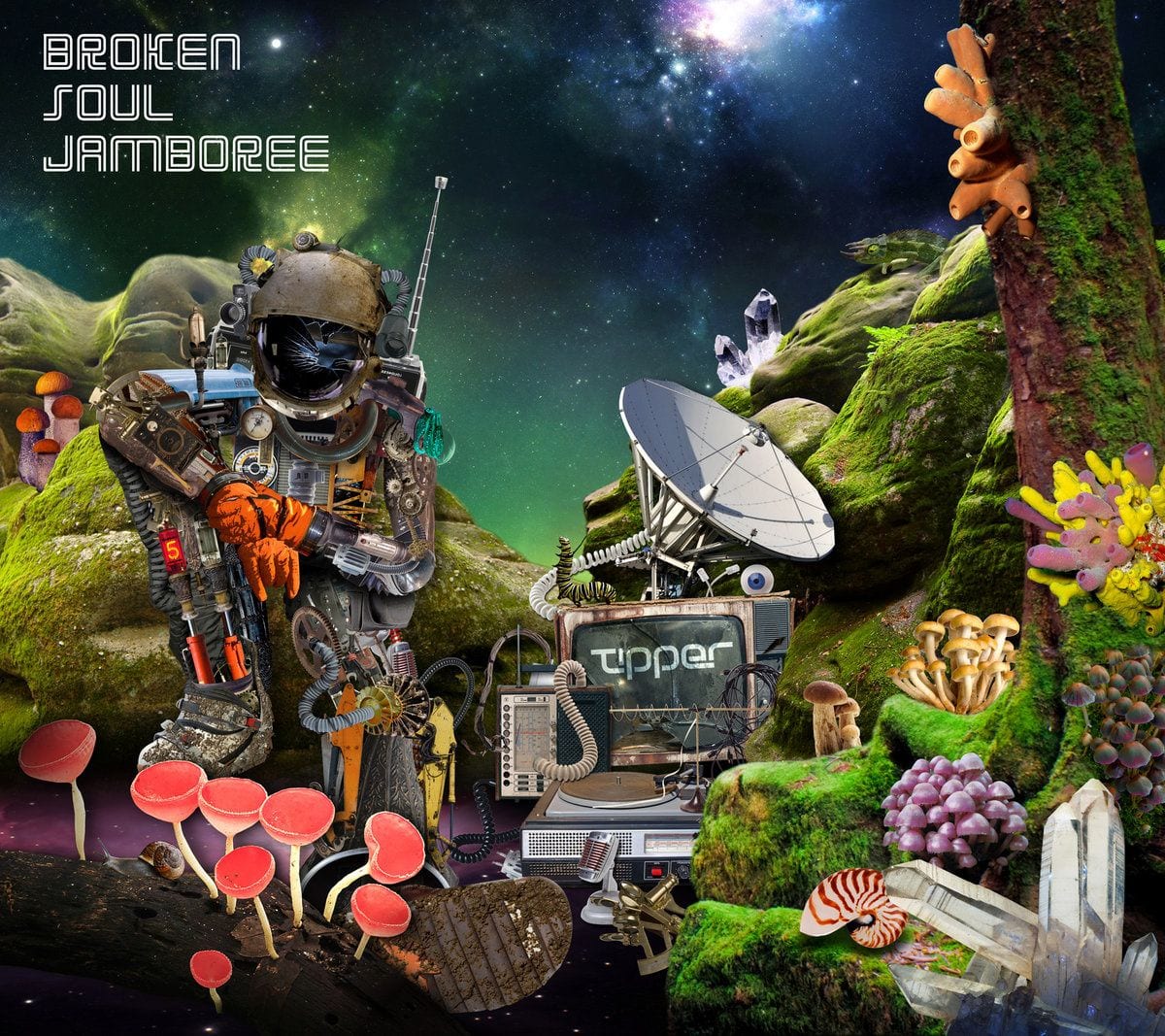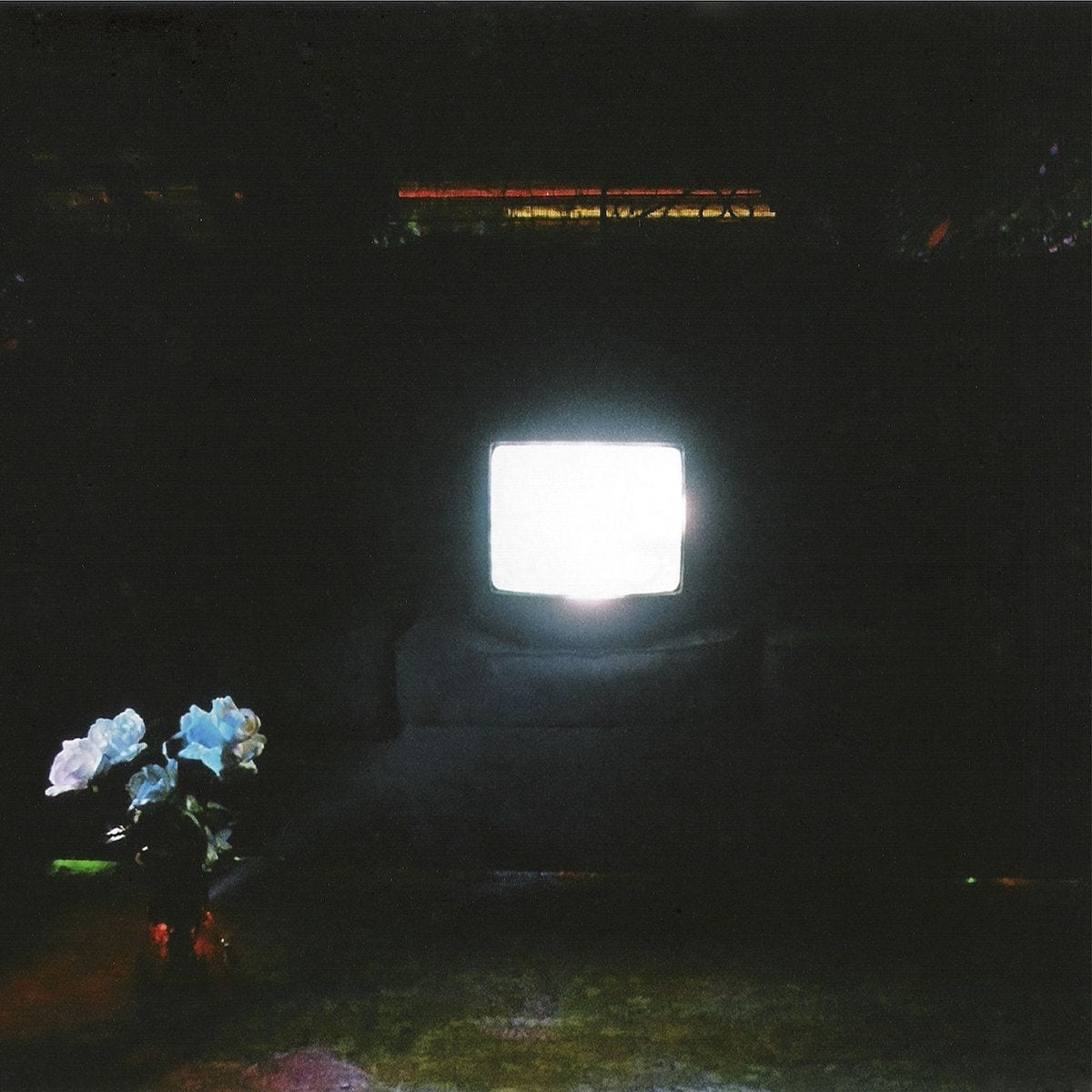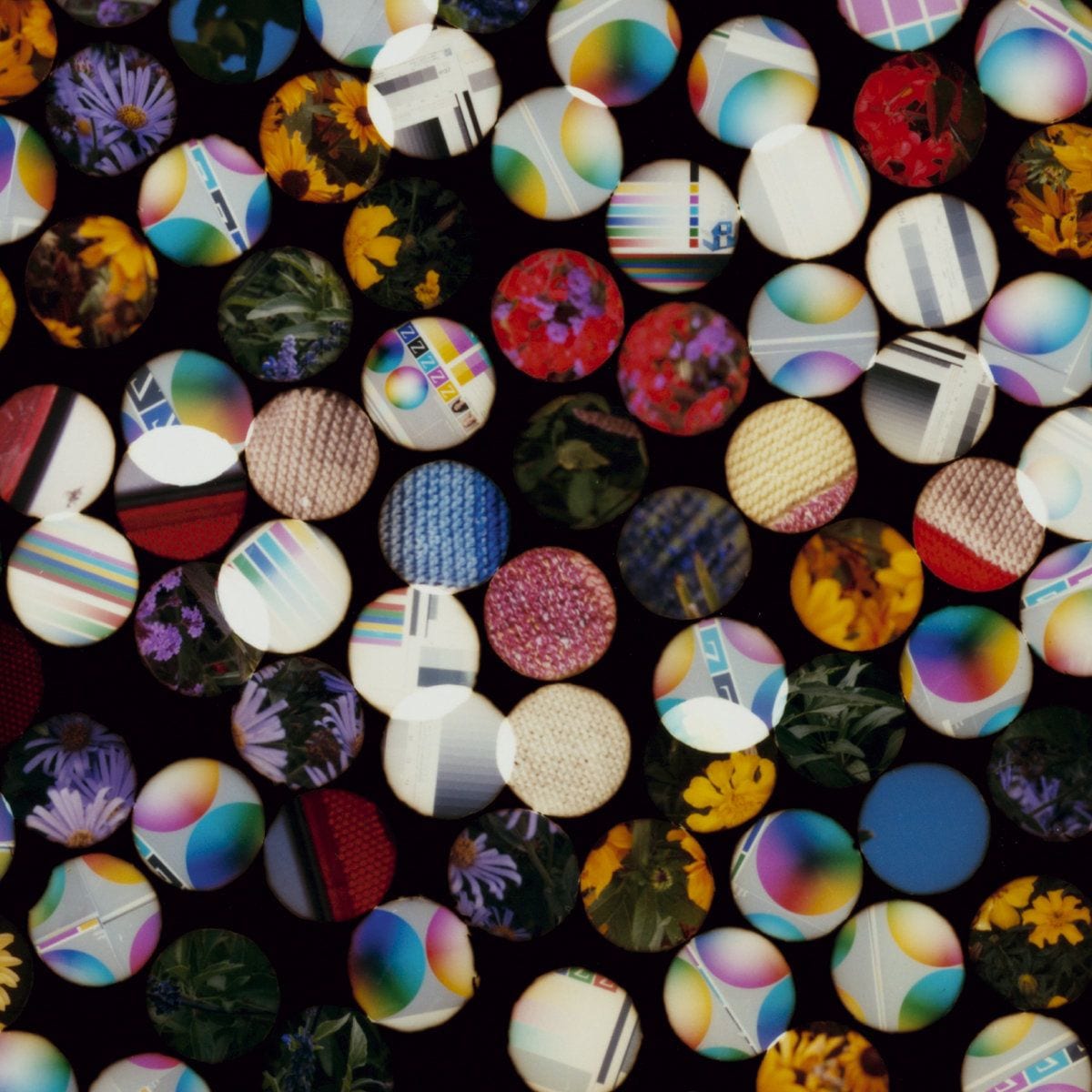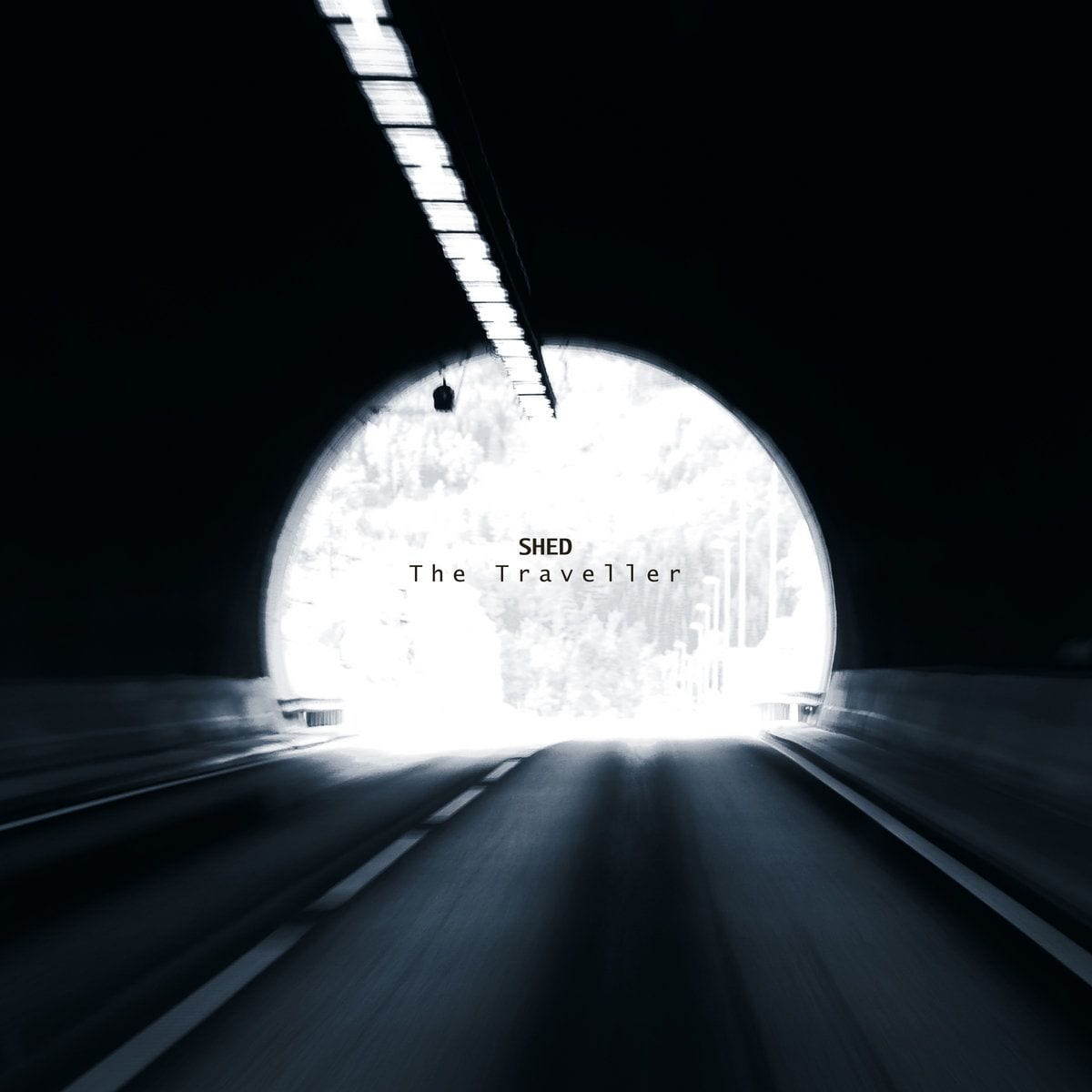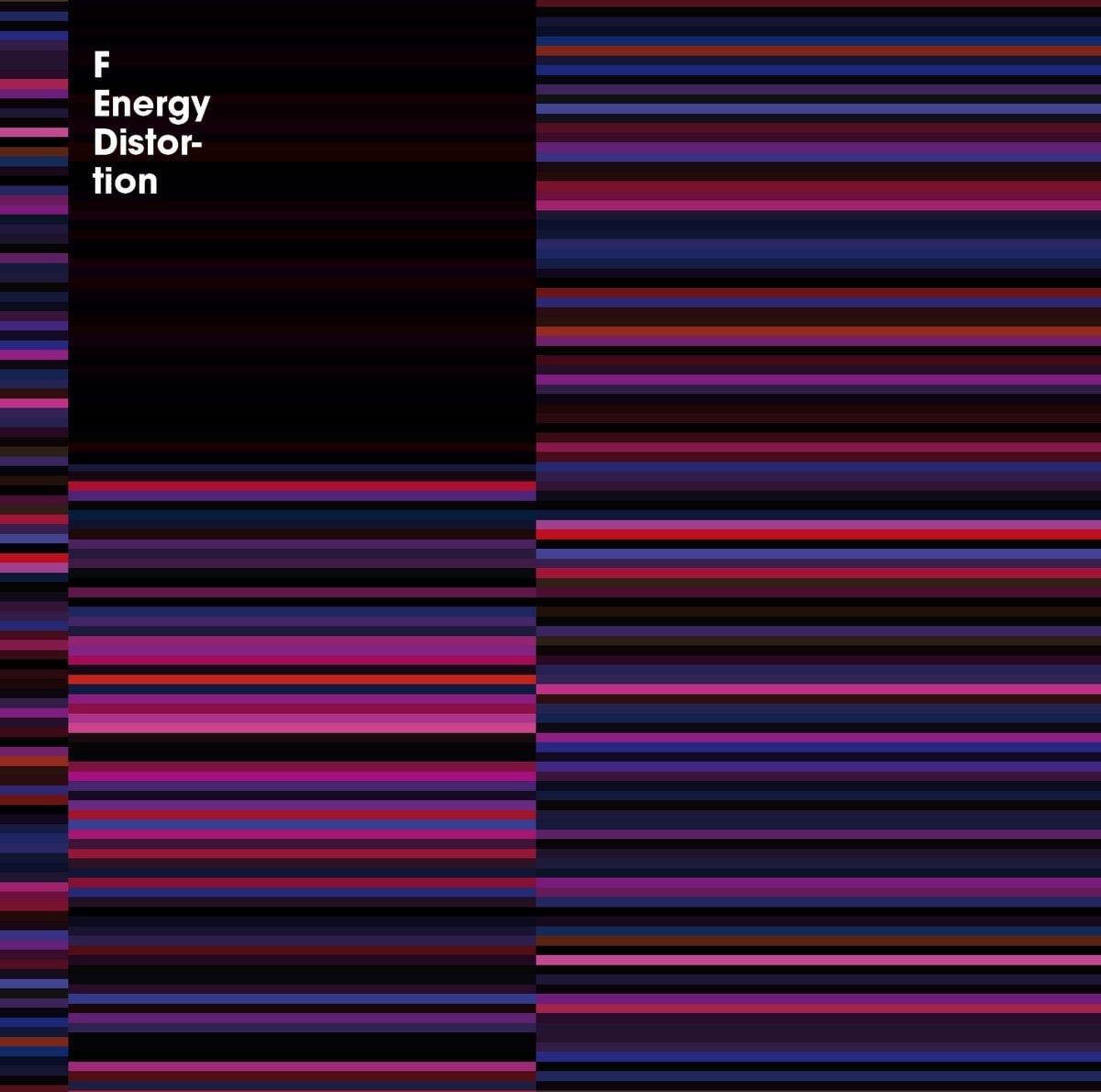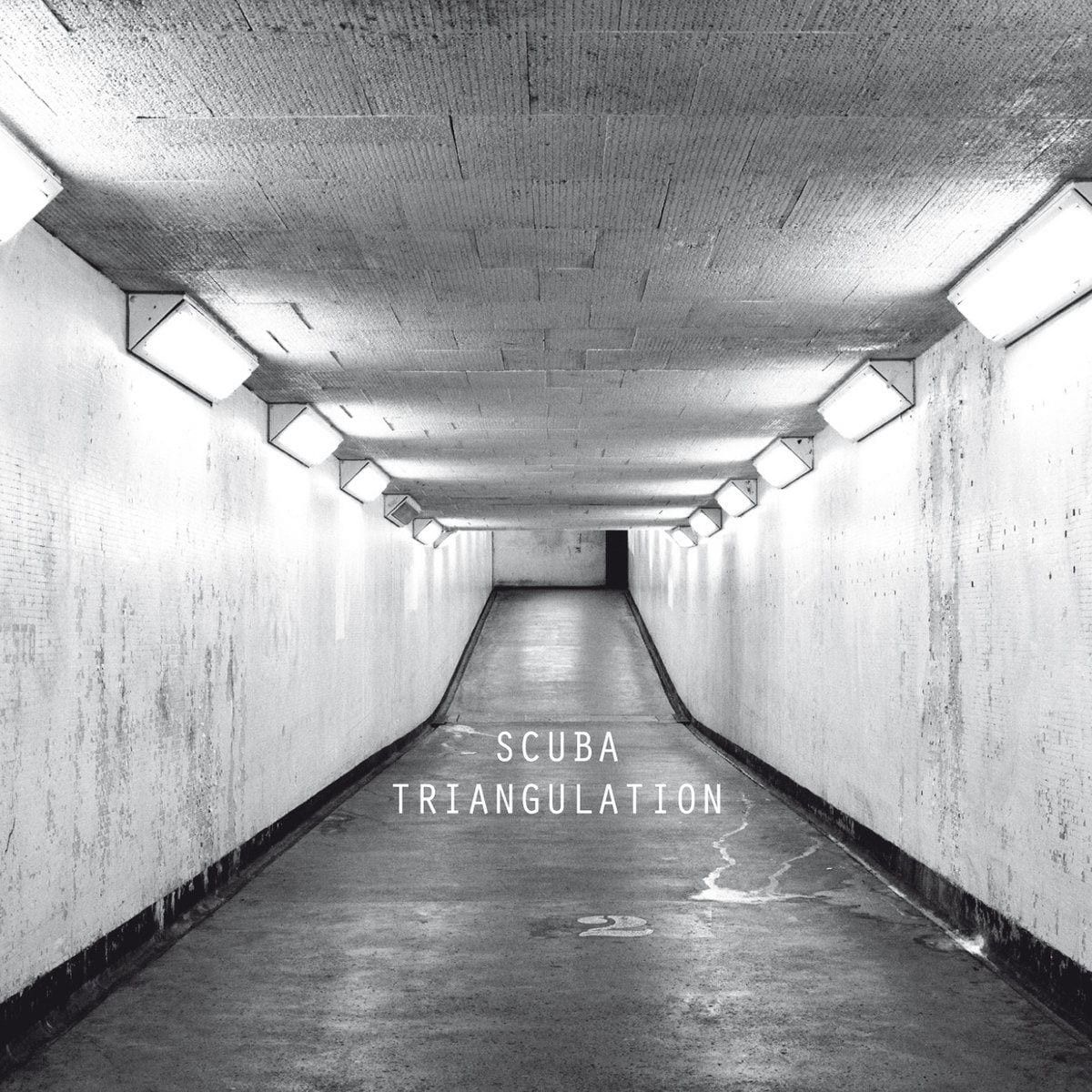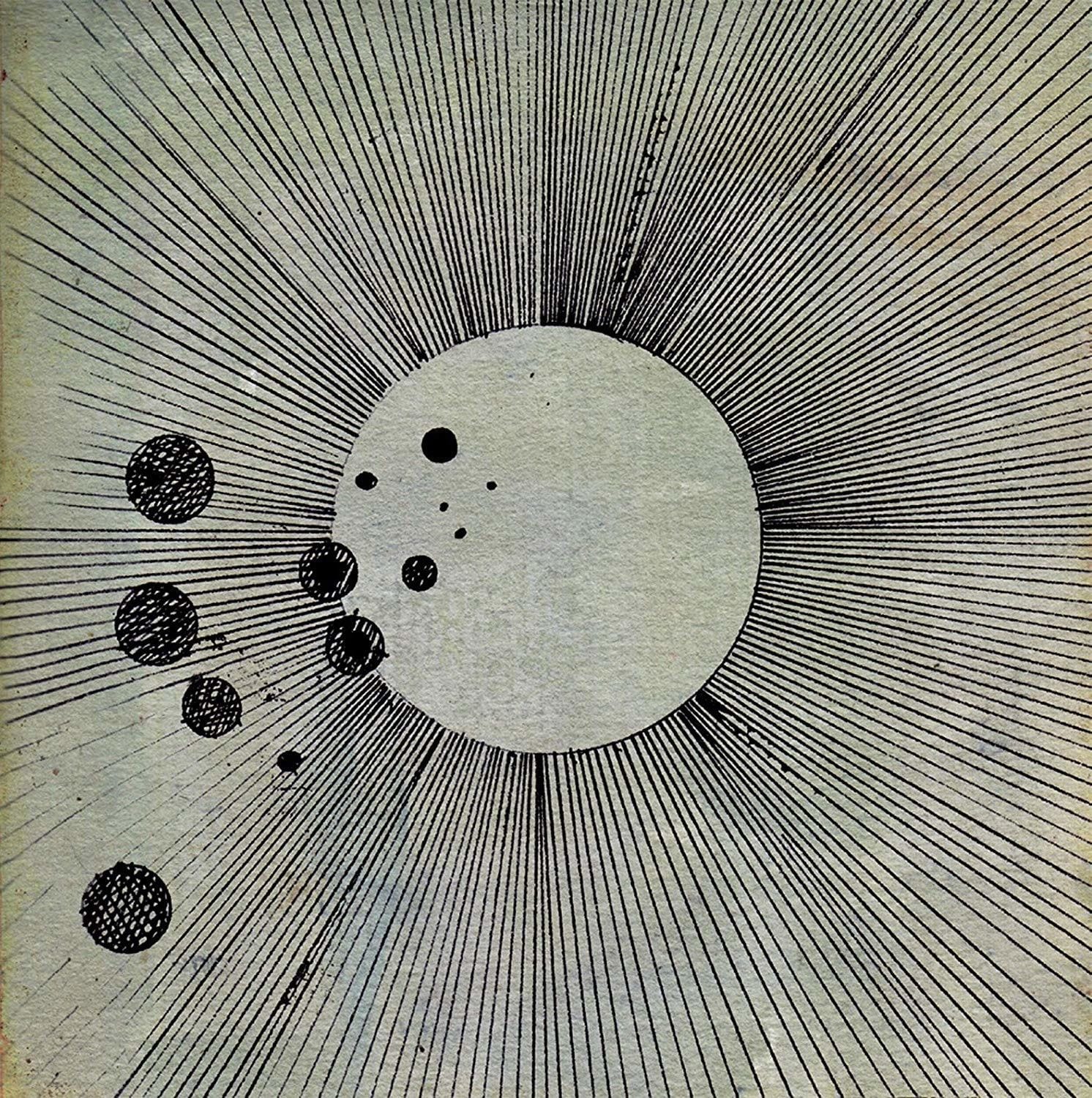As per usual, electronic music in 2010 was rhizomatic, but it was curiously unnamed. For all the music’s perversely exclusive adoption of subgenres and elite jargon, many electronic sounds in 2010 remained in the margins, using the lexicon of its predecessors to define what they were. In what world is Actress dubstep or the Night Slugs crew Funky/Grime/whatever you call it? It seems that the glut, as described in last year’s rendition of this column, has coagulated so densely that criticism has a hard time keeping up. We’re getting no help from the artists themselves, who seem gleefully unconcerned with staying in one spot very long.
All of this makes for a multiverse (to borrow Ginz’s term for his umbrella of labels) that’s hard to contain in summary. If it weren’t for television and the mainstream press’ aching conservatism, the entire underground and overground would be electronic in 2010, with miscegenation bleeding in from all sides. On the radio dial, the flirtation with Jersey Shore trance-pop and Lady Gaga-style electroclash still dominated. But there was also Nicki Minaj naming a song after Massive Attack, Kanye West sampling Aphex Twin, Britney Spears collaborating with Rusko, Christina Aguilera working with Ladytron, Drake concocting productions so weird they could have come out on Olde English Spelling Bee records. There was an HP commercial boasting its free beats program as its main selling point (with a house-music-composing Dr. Dre masked like Madvillain to boot).
On the British charts, which have always been uniquely more kind to electronics, grime MCs were all over the charts. However, the likes of Wiley, Tinie Tempah, Skepta, Roll Deep, and Dizzee Rascal (who scored his fourth #1 single) seemed to be abandoning hyperkinetic grit and innovative production schemas for a more accessible hip-hop (hip-house?) template. A decade after its inception, dubstep even provided a presence on the charts with Katy B’s crossover success and the power duo of Skream and Benga’s Magnetic Man, likewise delineating a more palpable version of a formerly abstruse underground form.
Meanwhile, indie music seemed littered with blips and bloops, chillwave, and hypnagogic pop’s lingering electro-reverb still resonating over from 2009. Not Not Fun’s neo(n) psych and Olde English Spelling Bee’s art-pop led the pack, but those in the know could find underground cassettes that stretched from here to the moon. Whether you could digest their bizarre takes on pop or not, Laurel Halo, Matrix Metals, Hype Williams, Autre Ne Veut offered releases that sounded like nothing that had come before, the spirit of recession-priced experimentation proving itself to be alive and well in basements around the nation.
Yet, much of the scattered discourse revolved around witch house, a genre of power-chords, Screwed vocals, spooky ambience, and artist monikers comprised of un-Googlable wingdings. The scene was assembled around the 20 Jazz Funk Greats affiliated Tri Angle records, who notably released brilliant EPs from Balam Acab and oOoOO. Most controversial, however, were the compressed-to-fuck threesome Salem, whose debut full-length was alternately lauded as genre-in-the-making brilliance and lamented as lazily tossed together misogynist trash. Post-pop and witch house came together in Tri Angle’s Let Me Shine for You compilation, an un-ironic collection of remix and cover versions of Lindsay Lohan songs that’s actually really, really good.
Witch house’s pitched-down vocals were a gimmick that had been advanced long before DJ Screw in the form Juke, a Chicago based hip-hop and house hybrid that underwent a 2010 revival via a series of reissues, as well new footworking joints by the likes of DJ Nate on Planet Mu. Its influence was soon “perculating” through trendsetting singles by Addison Groove and Ramadanman.
Android Face by bluebudgie (Pixabay License / Pixabay
It’s hard to believe that in 2010 there is a genre that has escaped retrospection, but there were two. The first half of the year witnessed the emergence of two compilations, Cold Waves and Minimal Electronics Vol 1 and The Minimal Wave Tapes Vol. 1, accrued by the heads of the Wierd and Minimal Wave labels respectively, which brought back DIY minimal synth music in a big way. Though the movement began at the opening of the decade, it rose to public prominence this year, thanks to the aforementioned collections and the online celebration of a series of newer artists like White Car, Cosmetics, Automelodi, and Xeno and Oaklander. Arguably, Factory Floor’s persistent post-punk pulsations fit somewhere in this canon too.
With witch house and minimal wave, electronic music appeared to be moving in a darker direction, though Philip Sherburne noted how this had been trending for a while. Certainly, minimalist releases by the likes of Milton Bradley, Ancient Methods, Raime, Demdike Stare, and the Sandwell District label made the concept of austerity less like a sleek pose and more like the type of dystopian concept that Europeans would riot over. At the opposite end of the spectrum, crystalline and glistening kosmische and proto-new age proved somewhat impossibly to have more staying power than originally imagined, the loose genre being buttressed by strong releases from Emeralds, Arp, Oneohtrix Point Never, the Psychic Stewardess, and Stellar Om Source.
In the liminal space between dance and electronic listening music were albums by Shed and Actress, which both took sojourns in various genres that purposefully defied the gamebooks of all of them, thereby dividing listeners and critics alike. Then some ate away the borders of dubstep, textural ambient, and R&B (Kyle Hall, James Blake, Mount Kimbie), providing a warped mirror into the past that read the singing voice as a degenerated ideal, a depleted spirit that could only be accessed via quasi-magical means in these rough times.
Elsewhere, the foot-stomping beat was not yet dead. Caribou and Four Tet put out their clubbiest albums yet. Dial Records, at ten years, were as strong as ever with two showings on our top ten below, while Ostgut Ton made it to five with some solid outings as well, including a full length by Berghain’s resident DJ Marcel Dettmann. In addition to the old standbys, there were bigger-than-big tracks by new labels, particularly Numbers (Deadboy’s “If U Want Me”), Safe & Sound (Funkystepz feat. Lily McKenzie’s “For U”) and Night Slugs (Girl Unit’s “Wut”).
On the international front, 10 Ragas to a Disco Beat proved that a Bollywood composer invented acid house a decade before it swept the UK. Elsewhere, South African new wave on the Honest Jon’s disc Shangaan Electro provided yet another entry route to dubstep, particularly through LV’s singles for Hyperdub. Hyperdub otherwise stayed away from the style, its full lengths instead consisting of a 16-bit concept album (Ikonika), a grime long-player (Terror Danjah), and an overcast synthpop disc (Darkstar).
Pariah’s variegated Safehouses EP was a good, though certainly incomplete, a sampler of what else was going on in the genre. It certainly didn’t factor in Lone’s breakbeat anthems or Scuba’s ambient excursions or any number of other bricolage interpolations, but it’d be hard to look at the entirety of the scene directly in one vision without getting dizzy. That YouTube footage showed student protestors at the Millbank demonstrations banging their heads to dubstep proves that the genre still carries sonic and political potential as we head forward into the ’10s, even as dubstep godmother Mary Anne Hobbs resigned in September to teach.
Overall, it was a pretty weird year. D-Bridge and Instra:Mental made a return for drum ‘n’ bass palpable, Altered Natives made UK Funky sound dangerous, Squarepusher tried to be Daft Punk, Aphex Twin played with Die Antwoord, Oval returned after nine years with 70 mostly brief tracks, and the legendary London nightclub Fabric appeared to close before being bought up by the owners of the legendary nightclub Fabric. Ninja Tune turned 20 and invited literally everyone to celebrate. Both the Technics 1200 and the Sony Cassette Walkman went out of circulation. Seefeel returned.
The Orb collaborated with David Gilmour, which seemed like the culmination of a career. Brian Eno put out an album of Warp, which seemed to give further validation to each of them, Eno in terms of relevance and Warp in terms of prominence. Online, there was music to be heard everywhere, many of the best mixes being available absolutely free at websites like FACT, Resident Advisor, XLR8R, Mnml Ssgs, Little White Earbuds, and individual artist pages.
Crucial chunks of Tresor’s back catalogue finally got reissued, as did Virgo’s seminal self-titled release (the group even reunited). One of the best electronic rereleases though was Optimo’s unearthing of a 30-year-old Chris Carter cassette called The Space Between, which was rightly praised by many for its contemporary sound. Carter is perhaps best known for his work with industrial pioneers Throbbing Gristle, who unfortunately lost one of their founding members in late November. Peter “Sleazy” Christopherson’s influence, not only in Throbbing Gristle but particularly through his long-running project Coil, is immeasurable in the electronic community, particularly in as dark a year for music as 2010.
And then, of course, there’s the myriad other things one column just can not encompass, particularly those albums, like our number one, that stood alone. There will certainly never be justice done to those who are too seldom heard to make these kinds of lists or whose intensity of vision will only be known in the years to come. In an attempt to make up for this, we’ve included a brief list of selections 11 through 20, as well as a collection of our individual contributors’ favorite singles, EPs, mixes, and reissues from 2010. Please check out as many of these as you can and let us know who we’ve blindly forgotten. – Timothy Gabriele
10. John Roberts – Glass Eights [Dial]
The decade-old Hamburg-based Dial Records has consistently mesmerized throughout its tenure without changing too much of its primary aesthetic. Thus, explicating how this tendency persists with the rollover of each new release becomes a laborious and somewhat clunky task. One often feels obliged to simply blurt out the vacuous rhetorical “It’s a Dial Record, okay?” and leave it at that. American-born German resident John Roberts certainly made a Dial Record, full of disinterred samples, fireplace vinyl crackle, subdued beats, and murky atmospherics. Dance is only adjacent to Glass Eights‘ thematic concerns — it comes off too slow, internal, and melancholy to match the club acuity of his previous singles for the label.
Piano melody is central here, downturned and occasionally fraught, while caked in ethereal overtones — like Burial played by Debussy. Roberts’s acuity with the instrument (and it’s unclear when he’s messing with found sound and when he’s pressing the ivory himself) proves him a tunesmith with an ear sensitive to the fragility of one who walks alone. After the community of the club, there’s always the journey back, the inured assurance that utopia can only be ever temporary. And here’s the 2010 album for that walk. – Timothy Gabriele
LISTEN: Bandcamp
9. Pantha du Prince – Black Noise [Rough Trade]
Those of us who are familiar with the house and techno production work of Hendrik “Pantha du Prince” Weber won’t find the overall presentation of Black Noise to be much of a surprise. Micro clicks and lively but understated melodies are rampant on Weber’s third full-length, flourishing on beds of undulating percussive pulses. With Swiss Alps-sourced field recordings woven into its perpetually ringing tracks, Weber’s follow-up to the somewhat quiet, elegant deep house of This Bliss is nothing short of a masterstroke of sound manipulation and design.
While pinging guitar string harmonics are often an afterthought in the recording studios occupied by shaggy, unwashed youth, they’re magnified and subsequently rendered as enormous building blocks of Black Noise, synched up with a wealth of pattering synths that mimic miles of miniature vibraphones on “Welt Am Draht” and “Abglanz”. Outside of a Panda Bear guest spot, which is smeared with delay effects and paired with ample atmospheric nuances, Weber’s Black Noise is wordless and grey, a haunting, lights-down set that’s nearly impossible to shake from memory. – Dominic Umile
8. Shigeto – Full Circle [Ghostly International/Moodgadget]
It seems like forever since Dabrye’s last album came out, but Brooklyn prodigy Zach Saginaw (Shigeto) kept Ghostly International‘s refreshing hip-hop sensibilities alive with his debut album. Full Circle is more than your average instrumental hip-hop album. Following two equally glorious EPs, his debut bears the fruits of an epic aural adventure, collecting and reconstituting four years’ worth of field recordings into some of the most lush and vibrant digital atmospheres of recent memory, roughly themed around his Japanese grandmother’s escape from a United States internment camp.
While the timbres explored by Saginaw present all the diversity of contemporary life, the album does not come off like an electroacoustic exercise. Each track is underpinned by compressed, funky grooves guaranteed to draw hands in the air and add an extra blanket to a nice chill out. Though the subject matter is rather tragic, showing an instance of complete democratic failure, this album, and its predecessors, will bring a smile to your face. – Alan Ranta
LISTEN: Bandcamp
7. Tipper – Broken Soul Jamboree [Tippermusic]
Few producers in the new millennium have managed to define for themselves such a unique, refreshing, and recognizable sound as Dave Tipper. Over the past decade, the London producer has crafted 5.1 surround sound downtempo and raunchy nu-breaks so funky he dislocated his own spine. Just like all the albums before it, Broken Soul Jamboree is his best yet. Aesthetically following 2003’s Surrounded, this album saw Dave slowing down the BPM a touch to focus on more world music sounds, percolating atmospheres, and deceptive rhythms, including several 3/4 beats.
For example, “Brocken Spectre” has fairly ambiguous pulse, colored by sounds that are all over the map from Indian to field recordings and pure synthesis. Yet, Tipper’s eagle-eyed attention to all the intricacies of processing ties the whole piece together flawlessly. Where most albums are happy to tell a few stories or paint some pictures for you, Tipper creates whole new worlds with Broken Soul Jamboree. In the right frame of mind, this album can be a life-changing experience. This is pure sound. – Alan Ranta
LISTEN: Bandcamp
6. Emeralds – Does It Look Like I’m Here? [Editions Mego]
Emeralds arguably got more derivative from their breakthrough LP What Happened to their next record in wide distribution, Does It Look Like I’m Here?. Its references are pure 1970s electronic pop, krautrock, ambient, and classical minimalism. You can almost picture Robert Fripp and Brian Eno lugging their two big Frippertronics tape machines into Emeralds’ Cleveland, Ohio studio. Yet it didn’t sound like anything else in 2010. Among the bumper crop of wonky and dubstep, Emeralds stood out, inviting listeners to burrow through meshy layers of waveforms, analog synths, and electric guitar.
Once inside the record, the mood is not entirely comforting. The keyboards’ movement is best described as uneasy saturation. Meanwhile, Mark McGuire’s guitar — amiable on the surface — sounds as if it’s playing the soundtrack to a taut domestic drama (and on the title track, it yowls with downright menace). Does It Look Like I’m Here? displays a peculiar future world that appears eerily like the present, where scientific developments and human patterns meet in strange places. It’s apparent not only in the sounds but in the song titles. “Double Helix” and “Science Center” sit unsettlingly beside “The Cycle of Abuse” in the sequence. Likewise, “Summerdata” suggests that we might one day enjoy summertime by thinking of it as information to process. There are about 100 records my future self would rather live in than this one, but it is often captivating, and “Now You See Me” ends it with extraordinary beauty, in a brilliant moment of ecstatic peace. – M. Newmark
5. Four Tet – There Is Love in You [Domino]
Carrying a less minimal crown in 2010 than he wore on 2008’s Ringer, Four Tet returned with an album unlike yet suitably complimentary to his smash 2009 12″ with Burial. There Is Love In You‘s epic single “Love Cry” was a surprise early on in the year. Its pairing of midrange shuffle drums with a simple hushed vocal brought amid its test tones and tom fills is the sort of emotional electronic music for which the artist has always been known. But it’s the consistency on this album that makes it more than consoling. Throughout, there are introspective phrases — simple passages of chordal matter, synth pieces, or samples that truly speak to the listener. “Sing” is an example of this. It has the sweet trappings of indie pop without heading too far in a direction that might jeopardize the emotion felt elsewhere on the album. A cheerful, Dntel-esque elevation beyond the usual thinking-folktronica. – Jason Cook
4. Shed – The Traveller [Ostgut Ton]
Perhaps the strongest definition of post-rave thus far, Shed’s The Traveller took from his landmark previous LP, Shedding the Past, and built, cut, expanded, and polished with such density that it spoke out as a definite retrospective on dance music, techno, and sections of the underground culture that have been institutional in supporting the artistic and intelligent properties of this music, from the house music of Chicago to Detroit and across the ocean to Berlin. Without any derivation, the early cornerstone of the album, “Atmo-Action”, is made of the plate ‘verb space that’s resounded since Aphex Twin’s Selected Ambient Works 85-92. Closer “Leave Things” is transcendent, a nod to jungle, leaving at an arpeggiated speed far greater than with which it came. The Traveller is one of those albums that comes around. It becomes more accessible over time. – Jason Cook
LISTEN: Bandcamp
3. F – Energy Distortion [7even]
2010 saw a lot of buzz showered on a number of [genre]/dubstep hybrid albums, many of which were more hype than substance. F’s Energy Distortion, however, distills crucial elements of the Basic Channel/Chain Reaction dub techno sound and more ambient-leaning dubstep. Like the colors on its cover art, the music of Energy Distortion employs a limited palette to enrapturing effect. The beats are blunt, the pads cold and distant, and the vocals cut through like forgotten emotional memories. Furthermore, for such a lengthy LP, the focus and consistency is further impressive. Not once within Energy Distortion‘s 70-plus minutes does it feel like F is getting bored or losing the plot.
What most separates Energy Distortion from the pack is its immediacy, both musically and emotionally. Space-focused drum ‘n’ bass pioneers like 4Hero and A Guy Called Gerald understood that a well-placed pad and a longing cry are the keys to a higher emotional plane. On album-closer “Perspectives“, F shines as a disciple of this school. Without resorting to tired indie lyrics (as some lesser peer albums did this year, to a fault), F conveys overpowering and indescribable emotional states. The effect is not unlike that of kindred spirit Burial.
Like a number of the best albums of 2010, Energy Distortion‘s impact is, ultimately, understated. Without an engaging back story or hype-filled promotion (neither of which are necessarily a bad thing), F rises to the top on the strength of an honest, emotionally and physically present music. – David Abravanel
LISTEN: Bandcamp
2. Scuba – Triangulation [Hotflush]
Alongside Scuba‘s Sub:Stance mix or the lightly surging techno he issued as SCB, few electronic records were better suited for headphone listening in 2010 than Triangulation, the twisted, oscillating LP from the Berlin-based producer born Paul Rose. It’s a sonic wonder; ambient dark house, UK garage, and drum ‘n’ bass join a tide of trickling atmospherics on the album. Triangulation is a deep-lurking and kinetic standout in this year’s very impressive array of bass music releases. Those digging Mount Kimbie‘s Crooks and Lovers would do well to check into the guy who put out their records.
While his Hotflush label has been ahead of the pack in its forward-looking offerings, Scuba’s production work itself is mind-boggling. Triangulation furthers the experimental techno, dubstep, and house blends that the artist has explored recently via heavy EPs on Naked Lunch and his own imprint. On his second full-length release, Scuba’s beats are stacked with splintered verse, wood clacks, and air gusts piping through spare melodies and varied drum sounds. Gritty and potent, the album is melded seamlessly with the stinging efficiency of his DJ sets, so that Triangulation halts us in our tracks, planting us in the dank tunnel where it seems to have originated. – Dominic Umile
1. Flying Lotus – Cosmogramma [Warp]
Several years before Flying Lotus, instrumental hip-hop was largely a joke — rhymeless beats that rappers pumped out to sell records and make money or good-natured downtempo aimed at people whose hobbies included not paying attention. When J Dilla passed in 2006, a young Angelino from a famous family named Steven Ellison clutched Dilla’s torch without missing a beat and ran with it as fast and hard as he could go. Ellison, who called himself Flying Lotus, struck a brilliant equilibrium between his aunt Alice Coltrane’s mysticism and sedulity, his beloved Los Angeles, and the idle boyhood bliss he experienced behind the buttons of a Space Invaders arcade game.
The resultant music was urbane, hyper-stimulated, and flagrantly artistic. Ellison had a slight ego when his contemporaries played it cool, but it fit with the music’s supreme confidence. Hip-hop and electronic hadn’t made out so gracefully since the glory days of Mo’ Wax, and before you could say “Endtroducing“, droves of artists were using FlyLo as a touchstone to develop their own beat-heavy, “wonky” explorations. And just as the lot of them began saturating the market with this stuff in 2010, along came Flying Lotus to whop them all back to the starting line.
Cosmogramma, only Ellison’s third full-length statement, is not just his flagship piece of electronic music — it is one of the most forward-looking albums in the genre’s history, kicking up the bar just out of everyone’s reach. FlyLo’s imagination seems to know no limits and his definition of hip-hop is dazzlingly fluid, rarely relying on the jerky Dilla-esque kick-snare that his previous records employed as a base. The atmosphere is constantly alive, awash in glistening blacks and purples like specks of obsidian floating in all directions.
And unlike its predecessor, Los Angeles, Cosmogramma never feels like it’s happening on a screen. You’re in it, baby; it is uncompromising body music that hurls you brain-first into its shuddering cosmic wilderness. Earworms abound, from Thundercat’s unbelievable bass in “Pickled!” to the motorcycle revs in “Recoiled” to the ping-pong balls bouncing behind Laura Darlington’s sultry singing in “Table Tennis”. We might have heard these things before, somewhere, but they never came together quite so inspiringly, never in a way that expands our field of vision and changes us so meaningfully for having taken the ride. – M.R. Newmark
The Next Ten and Additional Staff Selections
The Next Ten
Arp, The Soft Wave [Smalltown Supersound]
Unabashedly reverent of cosmic synth pioneers, Arp’s carefully paced, blissed-out masterstroke is both a lullaby and a Little Nemo in Slumberland Technicolor fantasy, with the most acute vocal Eno tribute to date. –
Timothy Gabriele
Autechre – Oversteps [Warp]
The veteran glitch techno duo sublimate into generative ambience, sounding not unlike Plaid in parts. Another essential release, in a career that’s been full of them. –
David Abravanel
Eskmo, Eskmo (Ninja Tune)
San Francisco-based Eskmo (a.k.a Brendan Angelides) surprised a lot of people with this eponymous release, featuring a wide range of influences, from R&B to glitch and dubstep, some introspective vocal work, and some of the sharpest production witnessed in 2010. –
Alan Ranta
Roel Funcken – Vade [Ad Noiseam]
Gorgeous and dizzy music, bass with captivating and grand melodies. Amorphous enough to be called “IDM” without irony or nostalgia. –
David Abravanel
Loden – Buggy [Mush]
Inspired IDM that drops the usual wankery and sequencer-showmanship for what such music should be: warm, cut with hip-hop, jittery, cohesive, and sophisticated.
Jason Cook
Monolake – Silence [Imbalance Computer Music]
Arguably Monolake’s best record,
Silence is comprised of found sounds expertly crafted into suspenseful rhythms, with Robert Henke’s typically stellar sound quality to match. – M.R. Newmark
School of Seven Bells – Disconnect From Desire [Ghostly International/Vagrant]
Bleary dream pop fueled by electronics and perpetually gorgeous vocal harmonies. –
Dominic Umile
The Seven Fields of Aphelion – Periphery [Graveface]
Tobacco used his non-Black Moth Super Rainbow recordings to make more BMSR-style recordings, but the well of the Seven Fields of Aphelion’s creativity runs a bit deeper, presenting a surprisingly lasting, sepia-toned ambient album. –
Alan Ranta
Slacker – Start a New Life [Godlike and Electric]
The best chillout record the KLF never made. Drawing from real life, Slacker explores the uneasy relationship to memory that comes after a fresh start in an unfamiliar place. –
David Abravanel
Teebs – Ardour [Brainfeeder]
Flowery and baroque wordless hip-hop indebted to boom bap and field recordings. –
Dominic Umile
<hr>
Additional Staff Selections
David Abravanel
Best Single: Chemical Brothers – “Escape Velocity” (Virgin)
Best EP: Shlohmo – Campin (Friends of Friends)
Best DJ Mix: Four-way tie for the stellar DJ-Kicks mixes: Apparat, Kode9, James Holden, Juan MacLean (!K7)
Best Reissue: Virgo – Virgo (Rush Hour)
Jason Cook
Best Single: DJG – “Hydrate” (Warm Communications)
Best EP: Chymera – Ghosts (Connaiseur); Balam Acab, See Birds (Tri Angle).
Best DJ Mix: Apparat – DJ-Kicks (!K7)
Best Reissue: Various Artists – The Minimal Wave Tapes Volume 1 (Stones Throw)
Timothy Gabriele
Best Single: Endgames – “Ecstasy (Jam City Refix)” (Night Slugs)
Best EP: Balam Acab – See Birds (Tri Angle); Blondes – Touched (Merok)
Best DJ Mix: Szare – LWE Talking Shopcast 07 (Little White Earbuds)
Best Reissue: Virgo – Virgo (Rush Hour)
Mike Newmark
Best Single: Four Tet – “Sing” (Domino)
Best EP: Machinedrum – Many Faces (LuckyMe)
Best DJ Mix: Kode9 – DJ-Kicks (!K7)
Best Reissue: Anthony ‘Shake’ Shakir – Frictionalism 1994-2009 (Rush Hour)
Alan Ranta
Best Single: Akira Kiteshi, “Ming The Merciless/Ion-Bru” (Special Branch)
Best EP: Kanji Kinetic – New Era (Tigerbeat6)
Best DJ Mix: Library Catalog Music Series (Asthmatic Kitty)
Best Reissue: Bruce Haack – Farad: The Electric Voice (Stones Throw)
Dominic Umile
Best Single: Four Tet – “Sing” (Domino)
Best EP: Memoryhouse – The Years (Arcade Sound Ltd.)
Best DJ Mix: Deadbeat – Radio Rothko (The Agriculture)
Best Reissue: Various Artists – Lagos Disco Inferno (Academy Records)
* * *
This article originally published on 23 December 2010. We are republishing select articles as part of PopMatters’ 20th anniversary.

